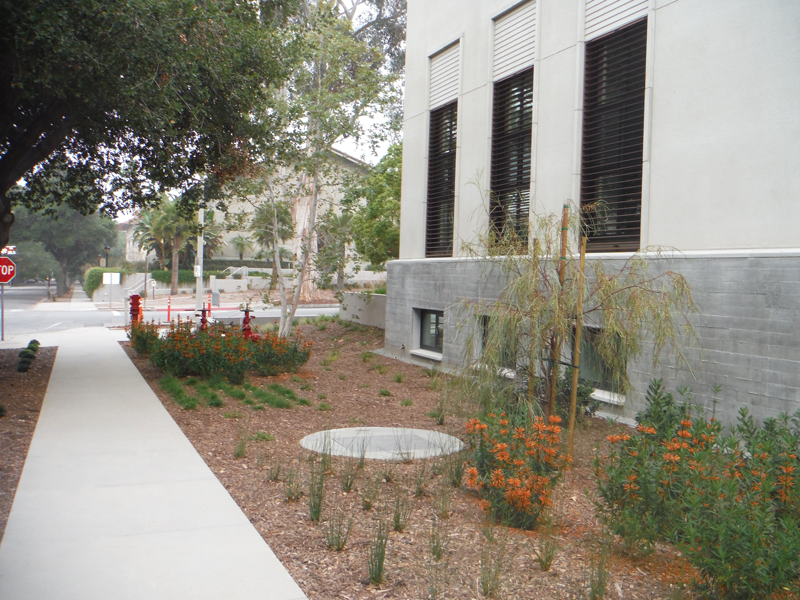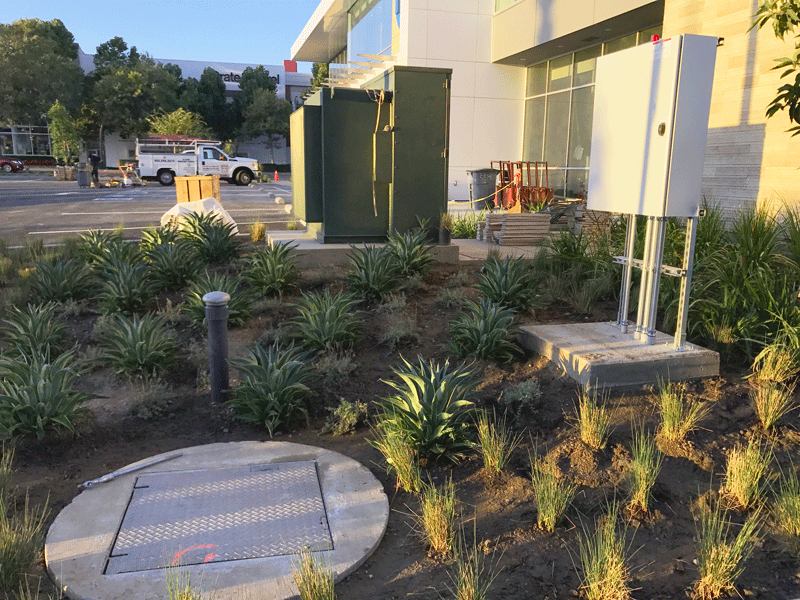
Romtec Utilities designs, manufactures, supplies, and delivers complete pump stations for many applications, including stormwater. Stormwater pump stations collect stormwater and then send it to a treatment facility, treat it onsite, or pump to discharge into an existing waterway. As urban development increases, impervious surfaces like concrete and asphalt cover more and more area. These surfaces prevent water from percolating into the ground and disrupt the natural water cycle. The amount of stormwater runoff in areas with these surfaces is much higher than natural, undeveloped areas. This disruption can have detrimental environmental impacts for the surrounding area and even the groundwater table.
In natural areas with permeable surfaces, roughly 10% of the stormwater flows directly into streams or rivers. Most of the water either evaporates to the atmosphere or percolates into the ground and joins the water table. This natural action is the best filtration method on the planet. Water from aquifers is clean and supplies the majority of the world’s drinking water. Run-off due to impervious and impermeable surfaces causes floods, erosion, spreads pollution, and even changes the composition of streambeds. Using detention or retention ponds with a pump station to temporarily impede stormwater is an effective option, but it requires ample space that may not be available or cost-effective in an urban environment.

Large cities have impermeable surfaces virtually everywhere, from roof tops to parking lots. Stormwater travels along these surfaces, collecting pollutants prior to entering any stormwater management system. This is called “nonpoint source” pollution and is caused when stormwater gathers and moves pollutants into a new area. These pollutants become very concentrated through this process. In some cases, this is called a “first flush.” It describes when pollution in the form of dust, debris, chemicals, and other contaminates build up on an impermeable surface. Then in a rain event, the water collects the pollutants from a large area and flows into a specific point, like a creek or pond. The contaminants in stormwater can be so concentrated in this scenario that many districts treat it like wastewater, pumping it with a lift station to sewer treatment plants before it gets discharged.
Proper discharge and onsite treatment can greatly reduce this effect. Pumping and discharging into bioswales, wetland systems, and infiltration basins will mimic a more natural process. This allows low concentrations of pollutants to be absorbed into the ground where it is filtered before it enters a waterway or watershed. This also takes the pressure off of treatment facilities, which can get overwhelmed in heavy rain events. Treatment facilities are expensive to maintain and operate, so finding other options that mitigate the negative environmental impacts can be attractive. Modular wetland systems are an increasingly popular onsite treatment method designed to mimic the wetlands found naturally across the planet.

Modular wetland systems with pump stations are effective onsite treatment options for stormwater, and they may be required in some areas. A stormwater pump station can discharge into a modular wetlands system or can pump to discharge downstream from the system. First, rainfall is collected via storm drains throughout the area. Next, the stormwater undergoes biofiltration by flowing through the treatment media, which imitates the earth’s natural process of filtration and filters out any pollutants. Many modular wetlands include plants in the media bed, these will help filter out contaminants and promote a small ecosystem within the wetlands system. Depending on the application, the treated stormwater will be slowly discharged into a waterway or be sent to further treatment. These systems come in many different shapes and sizes and can be designed to handle large flows with ease. In all of the possible configurations, it is typical and often necessary to include a pump station to either deliver or discharge the stormwater.
Stormwater pump stations are becoming more and more necessary with the increase of urbanization and impervious surfaces. The best option for managing stormwater is different in every area and all Romtec Utilities pump stations are site-specific and designed around your unique pumping conditions. We can engineer discharge structures, onsite treatment options, detention ponds, and anything else needed in your stormwater pump station’s design. Handle your stormwater effectively and responsibly by choosing an experienced pump station engineer like Romtec Utilities and contact our sales team today!

Comments 1
Thanks for sharing